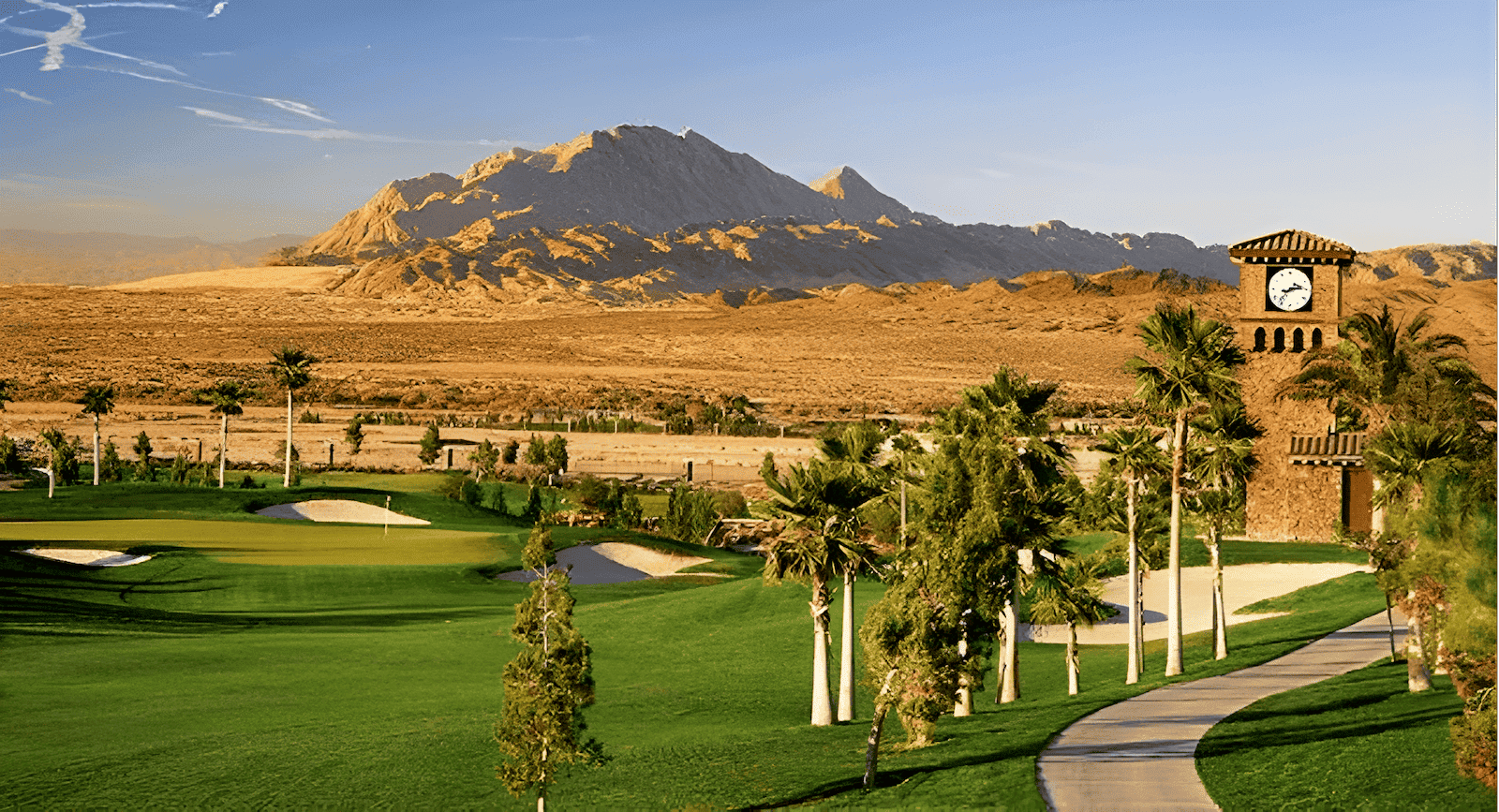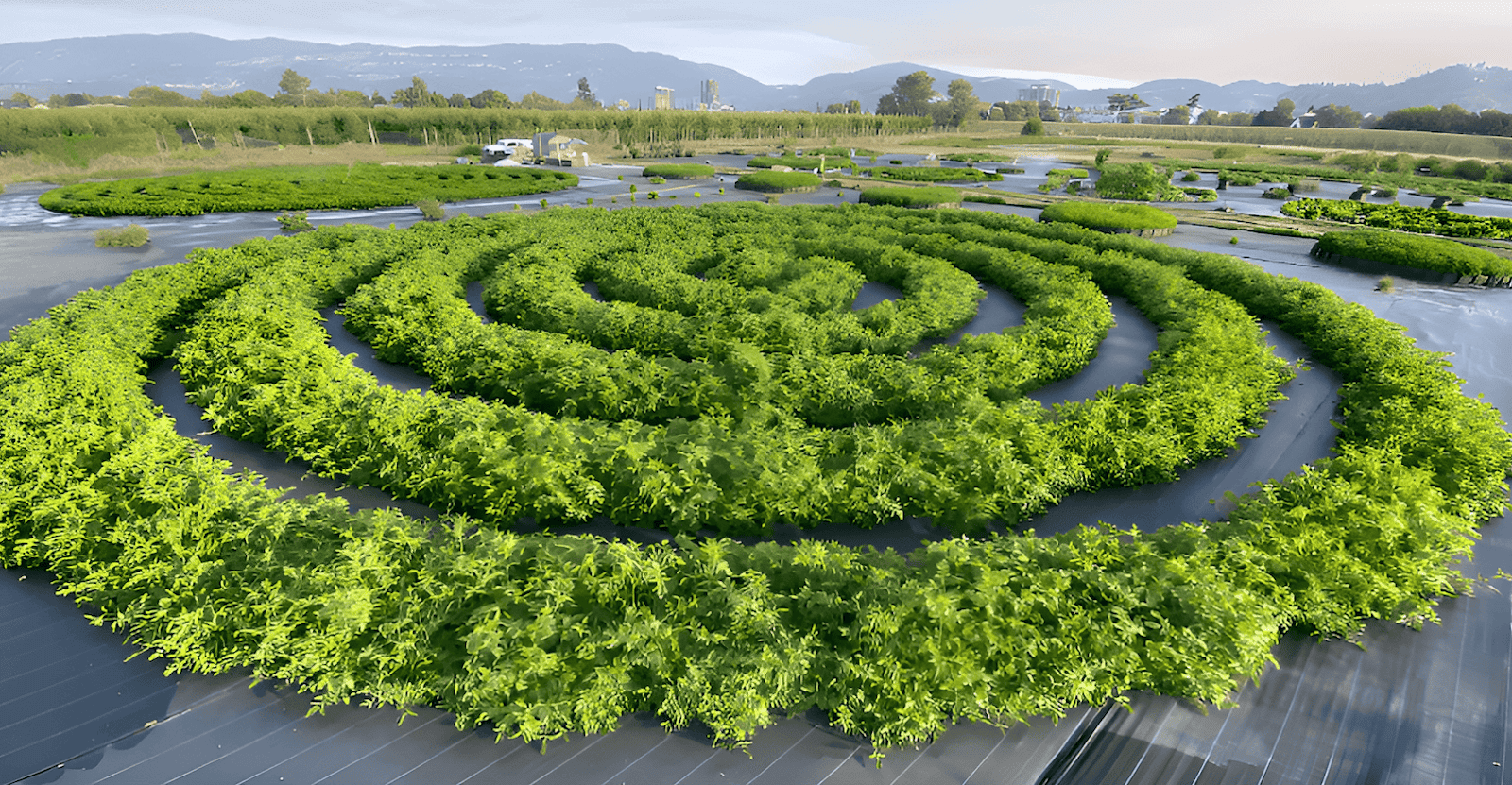Las Vegas
Once an oasis, the marshes were drained a century ago in favor of tourism and development. The artesian wells and springs are long gone, farms have disappeared, and the city depends on Lake Mead for its water supply, which is at its lowest level since the construction of the Hoover Dam. Unless extreme water saving measures are adopted, Las Vegas is danger of running out of water.
The average residential water use in Las Vegas is approximately 220 gallons per day per household. The Southern Nevada Water Authority (SNWA) has set a target to reduce this usage to about 180 gallons per day per household by 2035. These figures reflect ongoing efforts to promote water conservation in response to the region's water scarcity challenges. In an effort to reduce water use and address food security throughout the city, we will implement a community driven, city-wide, water-smart Crop Circle Garden program. Each garden will use just a fraction (just 4 gallons) of the 170 gallon per day goal targeted by the city while growing enough fresh produce to support a family of four.
Project Las Vegas
We are building a Community Garden project in collaboration with Chimera Golf Club, nestled in Henderson, Nevada an oasis surrounded by a vibrant, tight-knit community, known for its commitment to outdoor recreation, community engagement, and well-being. As part of its dedication to the community, Chimera is establishing a community garden on the golf course grounds to grow fresh, nutritious produce. This garden will supply fresh ingredients to the clubhouse restaurant, ensuring locally sourced, high-quality meals, and also offer produce to community members, with a primary focus on supporting those in need nearby. Recognizing the importance of sustainable resource use, Chimera is utilizing water-smart methods to address the region's water restrictions. Techniques that conserve water while maximizing yields make this garden both environmentally responsible and practical. The Chimera community garden, built by Growing To Give, aims to become a model for sustainable, community-centered food production throughout Las Vegas and beyond.
Growing To Give
Growing To Give is committed to alleviating hunger, promoting food security, and environmental stewardship through the development and deployment of community garden initiatives and programs using water-smart agricultural systems. Their mission is to empower marginalized, low-income communities to grow their own fresh produce to reduce reliance on traditional food distribution systems.
During the implementation phase of the Chimera Community Garden, residents will be engaged through workshops and educational campaigns, learning how to cultivate their water-smart gardens with techniques that align with the city’s stringent water use goals. As a result, the program aims to reduce residential water consumption, foster community involvement, and improve local food security, serving as a model for sustainability in the most unsustainable city in the world.
The Gardens
The Gardens bring substantial value to the surrounding community by combining a highly efficient, spiraled design that maximizes plant growth while conserving water, fertilizer, land, and labor. Centered around the needs of the community, it provides fresh produce and cultivates a sense of unity as a gathering place where people can connect, share ideas, and learn together. It’s a natural, educational space, engaging families and children in understanding how food is grown and how to incorporate it into healthy meals. This setting not only promotes exercise and time spent outdoors but also builds a healthy, sustainable environment. As a low-impact, sustainable enterprise, the Chimera Community Garden fosters a thriving ecosystem, benefiting both the local economy and the well-being of the community.
At the heart of the project are Root Tubes, a proprietary garden assembly that efficiently waters and fertilizes each plant in a raised circle. The assembly holds water within a fertilized vessel that feeds each plant over time creating a self-contained targeted agriculture system. The advantages are numerous:
✔ Root Tubes use 90% less water compared to flood, drip, and spray irrigation methods.
✔ Root Tubes use 85% less fertilizer.
✔ Root Tubes are a “plant-and-forget”gardening system requiring little maintenance.
✔ Root Tubes grow crops organically and the “need-to-weed” is virtually eliminated.
✔ Root Tubes double yield in half the space.
Beyongd The Golf Course: Food Deserts
Currently, there are four grant or foundation funding applications submitted to support the Chimera Community Garden initiative, with a total funding request of $137,500 and an overall project budget approaching $750,000. Chimera Golf Club’s initial investment will significantly enhance our ability to continuously pursue additional grants, attract community and corporate sponsorships, and strengthen our case for submitting water credit and enhanced allocation requests through the Southern Nevada Water Authority (SNWA). These requests will align with SNWA’s incentive programs for golf courses that adopt recognized water-smart technologies and contribute to community food security.
Two of the current grant applications specifically support a farm-to-table community garden initiative in partnership with local nonprofits serving food-insecure populations across Southern Nevada. These initiatives also support the development of a Chimera Golf Club–hosted Farmer’s Market. Additional annual sponsorship opportunities will be available for Tuscany Village HOA residents and Chimera Golf Club members, offering benefits such as access to gardening plots, harvest sharing, and participation in community workshops and planting events. Sponsorship tiers are being finalized (TBD).
A vital part of this initiative is our commitment to feeding those in need beyond the golf course community. A percentage of all harvested produce will be donated directly to local food banks, churches, shelters, and community kitchens throughout the Henderson and greater Southern Nevada area. We are actively forming partnerships with organizations such as Three Square Food Bank, Lutheran Social Services of Nevada, and area churches with existing food distribution programs. This ensures that the garden's impact reaches vulnerable individuals and families who lack regular access to fresh, nutritious food - reinforcing Chimera Golf Club’s role as a proactive contributor to the community and beyond.
At its core, this project is a scalable demonstration site for how golf course land can be repurposed for water-efficient, food-producing landscapes. It will serve as a replicable model for other golf courses in Southern Nevada and beyond. Numerous foundations support the expansion and sustainability of community gardens, and our project is positioned to take full advantage of this funding landscape.
Revenue from garden produce sales and food/beverage offerings at Slice 19 featuring ingredients grown on-site will enhance the Club’s bottom line. These new income streams, alongside cost savings from reduced water consumption and the potential elimination of SNWA water use penalties, can be reinvested into the garden and course operations for long-term resilience and growth.
With Chimera Golf Club’s leadership and initial investment, our collaborative team will immediately focus on continued fundraising, implementation of smart water and landscape technologies, applying for increased water allocations, and seamless integration of the garden into the course’s aesthetics and operations. Together, we will establish a 21st-century, water-smart, community-driven botanical food garden that positions Chimera Golf Club as a pioneering model for sustainable golf course transformation.




.png)
.png)
.png)

.png)